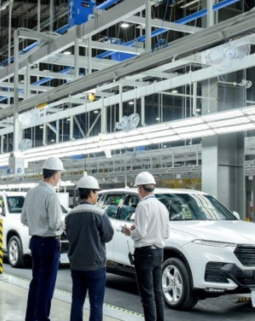In this article, brought to you by Vietwheels, we discuss how to navigate from the slowdown of automobile production and car sales in Vietnam. Analysts are analyzing the different internal and external causes impacting Vietnam's recent decline in automobile consumption, which has caused the country to drop to fifth place in Southeast Asia.
Southeast Asian Automobile Market
In terms of car sales during the first half of the year, Indonesia is in the lead, followed by Thailand and Malaysia, according to the Association of Southeast Asian Automobile Manufacturers (AAF). According to AAF’s recent study, there was a notable 32% decrease in units sold over the prior year in Vietnam and dropped to fifth place, behind the Philippines which had unexpectedly rose in ranking to fourth place.
External Elements Affecting the Automobile Industry in Vietnam
Vietnam's car consumption has been impacted by external causes such as the crisis between Russia and Ukraine and worldwide inflation. Car sales have significantly decreased because of these uncertainties, which have damaged consumer confidence and spending power.
Internal Difficulties Impacting Car Sales in Vietnam
Economic Inequalities: Vietnam's expanding economy and market conditions are the source of its internal problems. The lower purchasing power and living conditions of its people may be compared to those of several Southeast Asian countries, which has led to a decrease in the use of automobiles.
Price Differences and Model Selections: The Vietnam Auto Motorcycle and Bicycle Association's (Vamoba) chairman, Pham Cuong, draws attention to the country's comparatively high auto costs when compared to other nations in the region. Customers' tastes and capacity to buy cars are significantly influenced by Vietnam's price policy instability as well as the country's small selection of automobile models.
Challenging Financial Conditions (including Inflation and High Interest Rates): The drop in car demand in Vietnam is also a result of high cost of living, which impacts on disposable income as well as the high bank interest rates and problems with real estate market liquidity. The ability and inclination of consumers to invest in expensive commodities like vehicles are impacted by these financial difficulties.
Stimulating Vietnam Car Sales & Production
Nguyen Minh Dong, an automobile expert, highlights the significant price differential, pointing out that cars in Southeast Asian nations are 30–40% less expensive than those in Vietnam. Vietnam's restricted model options and erratic pricing policy make it necessary to think about ways to stimulate the market.
Exempting Incentives from Taxes and Fees: Experts recommend policies including lowering or eliminating special consumption taxes and auto fees. The goal of this program is to make car ownership more accessible by offering incentives to consumers.
Increasing the Variety of Vehicle Models Available: Experts suggest giving customers more options in order to solve the limited selection of car models. By accommodating a range of tastes and requirements, this approach seeks to potentially revive the market.
Examining Local Auto Loan Regulations: Experts advise researching auto loan regulations in other nations in the area to lessen financial strains on customers. More people may invest in cars if advantageous lending terms are put in place.
Conclusion
Although some analysts are concerned about Vietnam's declining car use, others see it as a sensible reaction to the country's economic difficulties. Reviving the auto market and promoting a more sustainable and balanced sector may be possible using stimulative measures including tax breaks, model diversification, and advantageous credit policies.
We hope you found this Vietwheels article to be useful. Please visit our News and Articles page to read more blogs about purchasing cars in Vietnam, and how to select the best vehicle for your own requirements. We wish you the best when searching for your dream car purchase in Vietnam.





